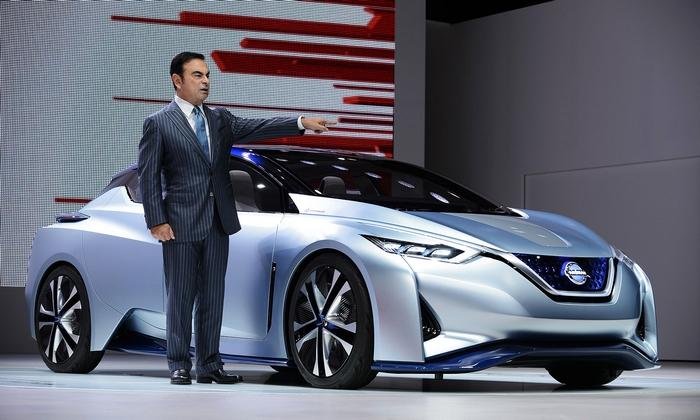Japan Inc.'s 2020 Vision: Self-Driving Cars on the Road

After deliberating for years about the best way to bring the technology to market, Honda, Nissan and Toyota used the stage at the Tokyo Motor Show last week to outline their next steps. Each company said it plans to sell cars by 2020 that will allow drivers to give up the wheel in traffic jams and while cruising on the highway.
Nissan Motor Co. CEO Carlos Ghosn, the Japanese industry's most vocal proponent of automated driving, said Nissan intends to harness the same pioneering spirit that led it to gamble on the Nissan Leaf and turn it into the world's top-selling electric car. If Nissan doesn't, he said, challengers will.
"The tech companies will take as much space as we are ready to abandon," Ghosn told Automotive News in a reference to Apple, Google and Uber, all of which have assembled sizable teams of experts on self-driving cars. "If we leave ground uncovered, if we are slow in developing autonomous cars, neglecting connected cars, well, guess what? We're going to be calling for more competition coming from outside the industry."
Last week in Tokyo, Nissan unveiled the IDS Concept, a sleek hatchback teasing a next-generation Leaf electric vehicle chock-full of autonomous systems.
The concept has a folding instrument cluster designed for automated driving. If the driver switches to autopilot, the steering wheel tucks away and the cluster pivots forward to place a giant touch screen where the steering wheel used to be.
The IDS was just one of an assortment of wild, self-driving concepts spread across the show floor. Among them was Honda's Wander Stand, which uses an omnidirectional in-wheel motor system to carry two passengers in a bell-shaped pod resembling a telephone booth.
One reason for Japan's new boldness is its government, which has been quicker than others to invest in vehicle-to-infrastructure communication networks that will help automated vehicles learn about lane closures, traffic jams and even other vehicles or pedestrians lurking in blind spots.
The 2020 date is significant. It's not only the same as Google's target for commercializing self-driving cars but also the year Tokyo will host the Summer Olympics, which leaders here see as a chance to showcase a resurgence of Japanese technology. Japanese media are fixated on the idea of athletes traveling to sports venues in self-driving cars.
"The Japanese government wants to be No. 1," Fumihiko Ike, chairman of the Japan Automobile Manufacturers Association, told reporters. "That's why they gave us a target of 2020 to showcase this technology."
Fantasy and reality
Until recently, Honda and Toyota had been quiet on automated technology, even as luxury brands such as Audi, Mercedes-Benz and Tesla openly tested prototypes on public roads and suggested that customers soon may be able to ride from Point A to Point B without touching the wheel.
And even as they embraced the promise of automated driving last week, they voiced caution about some of the more futuristic visions of transportation offered by companies such as Google and Mercedes-Benz. The German carmaker showed a lozenge-shaped concept vehicle called Vision Tokyo that would allow passengers to face one another in loungelike seating while the car handles the driving.
Honda Motor Co. wants to offer automated highway driving by 2020, but "we are still trying to think about what kind of features would make it something original to Honda," CEO Takahiro Hachigo said here.
Toyota Motor Corp. hopes to deploy a similar technology around 2020, but it sees Google's vision of podlike cars with no steering wheel at all as far from reality.
"For that to happen, cars must change, the infrastructure must change, people must accept the concept, and there must be new rules that enable such vehicles," said Mitsuhisa Kato, Toyota's executive vice president for r&d.
Toyota's system, Mobility Teammate, will help cars merge onto highways, change lanes, pass other vehicles and take off-ramps by themselves, using sensors and high-definition maps. But it needs the driver to pilot the first and last few miles on local streets.
"This is based on mutual help or assistance between vehicles and drivers, with both having a hand on the same steering wheel," Kato said. "In a way, we are trying to tell Google this is the reality of the world we are still living in."
Related News
